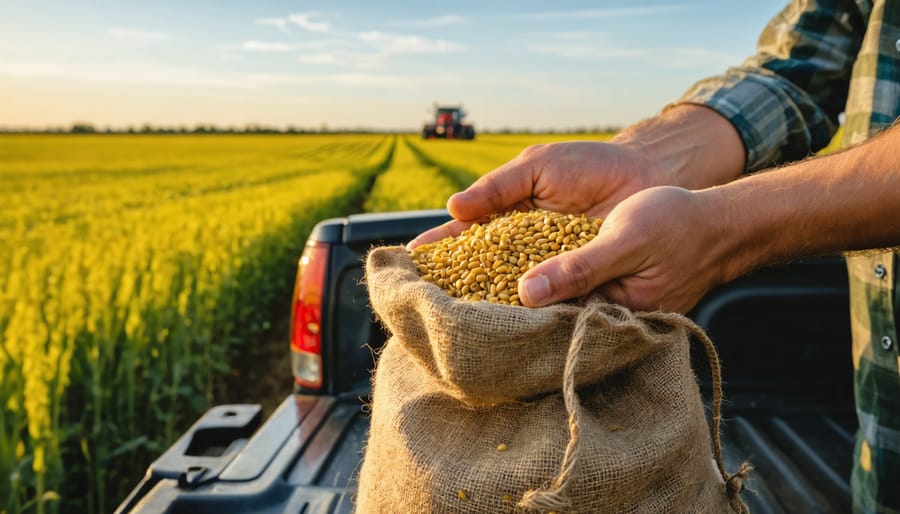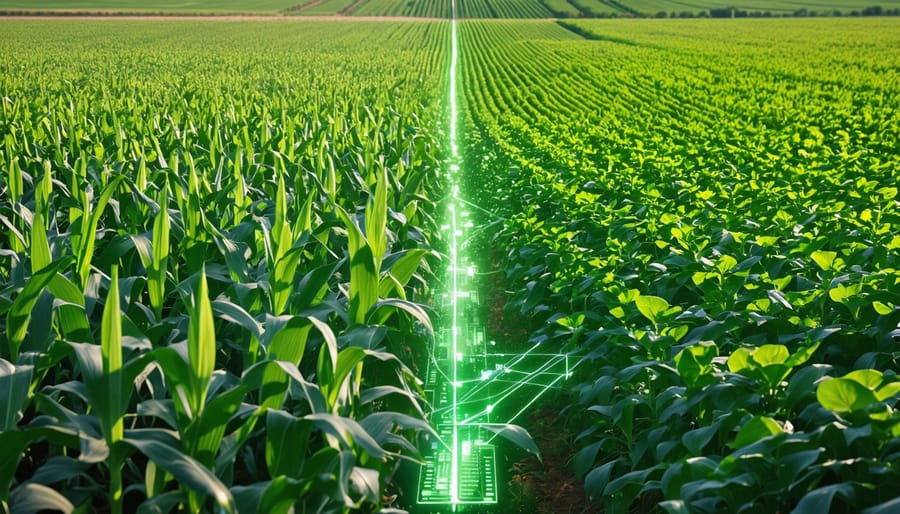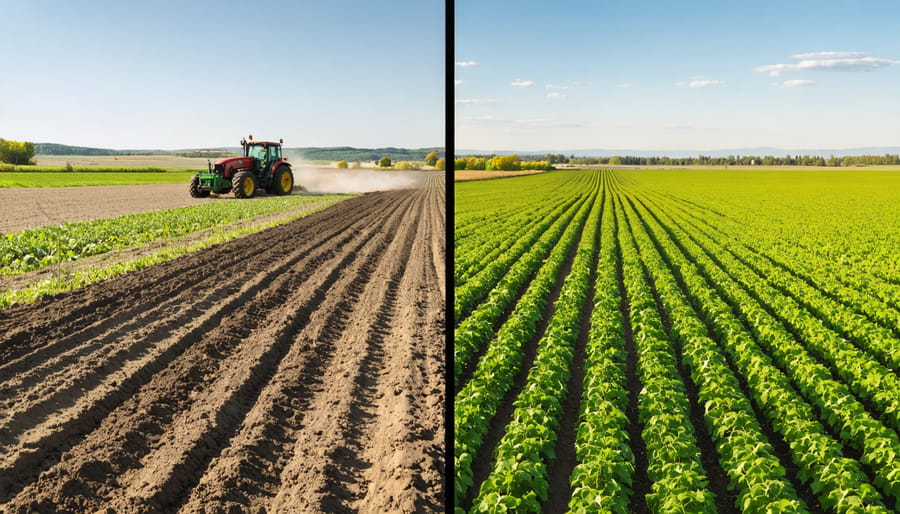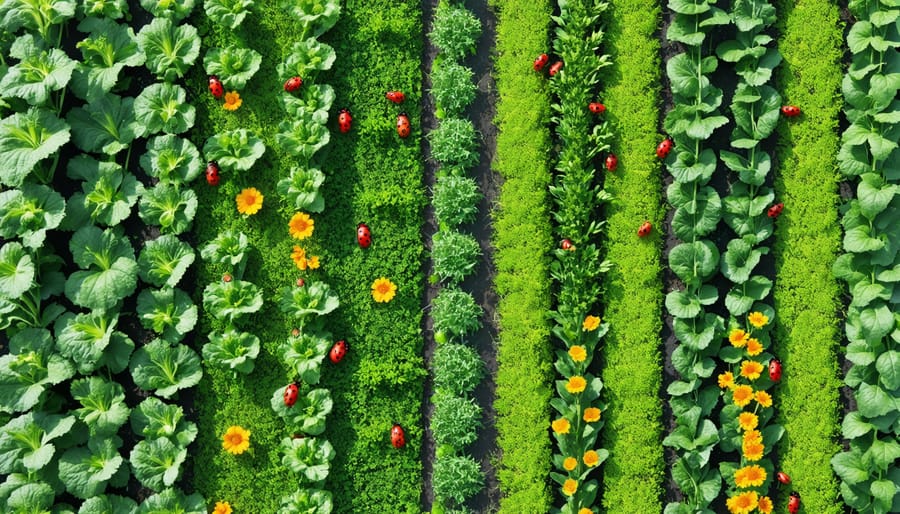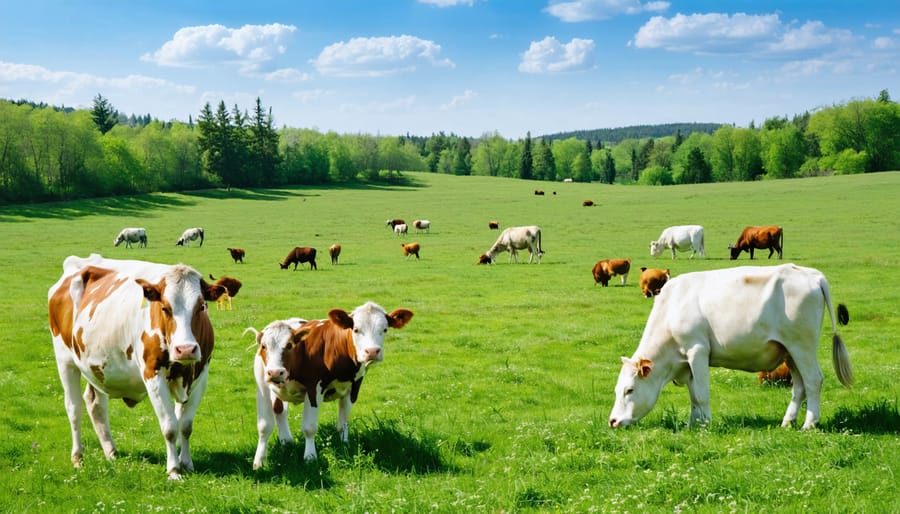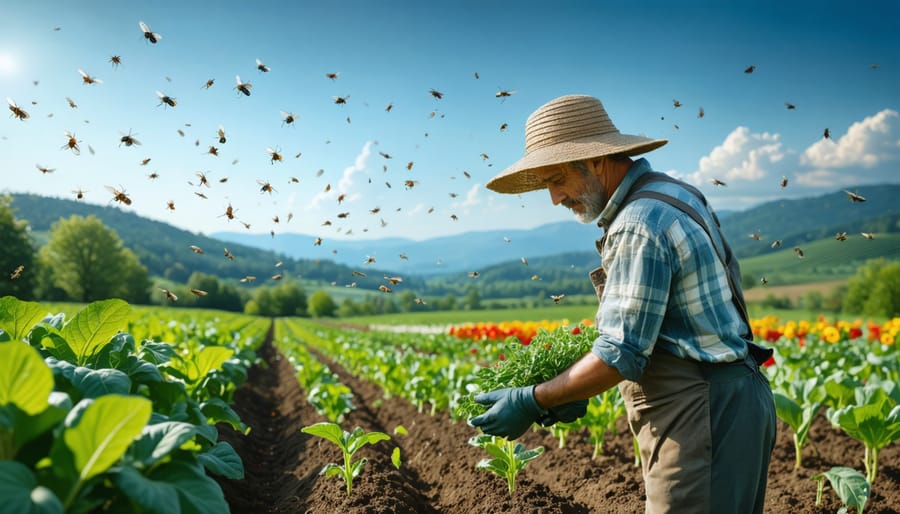Test your organic produce expertise and sharpen your vegetable identification skills with our comprehensive visual assessment tool. Whether you’re a seasoned farmer in Alberta’s fertile valleys or a curious consumer navigating farmers’ markets, accurate vegetable identification is crucial for making informed agricultural decisions and ensuring food quality.
This interactive quiz challenges you to distinguish between 40 common Canadian-grown vegetables, from heritage varieties to modern cultivars. Each question features high-resolution images captured in real farm conditions, accompanied by detailed botanical characteristics and practical growing information.
Beyond simple recognition, this assessment helps you understand key identifying features that separate similar-looking varieties, seasonal availability patterns, and proper harvest indicators. Master the subtle differences between organic and conventional produce while learning essential quality markers used by professional growers across Canada’s diverse agricultural regions.
Get ready to prove your vegetable knowledge and discover new varieties that could enhance your farm’s diversity or expand your culinary horizons.
Visual Clues That Signal Organic Produce
Natural Imperfections Matter
When learning to spot real organic produce, remember that nature rarely creates perfect shapes. Those slightly misshapen carrots or asymmetrical tomatoes often signal genuine organic cultivation. In conventional farming, produce is typically selected for uniformity, but organic farming embraces natural variation.
Alberta’s organic farmers understand that these “imperfections” are actually signs of authenticity. Small blemishes, irregular colouring, and varied sizes typically indicate minimal intervention in the growing process. These characteristics don’t affect nutritional value or taste – in fact, many experienced farmers suggest that these natural variations can signal better flavour development.
Look for vegetables with:
– Slight variations in colour
– Natural shape irregularities
– Minor surface blemishes
– Different sizes within the same variety
– Soil traces (easily washable)
Remember, while serious damage or decay should raise concerns, these natural variations are positive indicators of organic growing practices. They reflect the dynamic relationship between crops and their environment, telling the story of how they were grown.
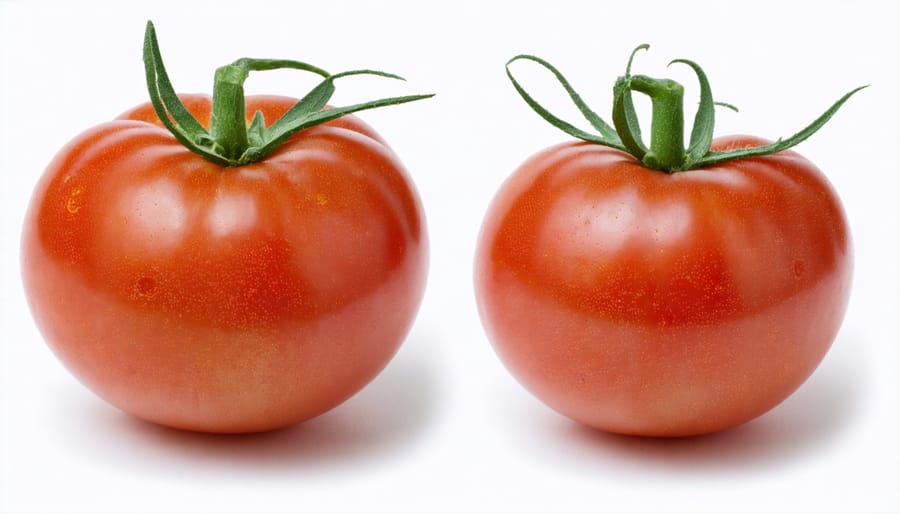
Size and Color Variations
When it comes to organic vegetables, appearance can vary significantly from their conventional counterparts. In Alberta’s diverse growing conditions, organic produce often displays natural size variations, with some vegetables appearing smaller or less uniform than those grown conventionally. This variation is perfectly normal and often indicates minimal intervention in the growing process.
Organic vegetables frequently show more intense or varied colouring, particularly in leafy greens and root vegetables. For instance, organic carrots might appear deeper orange or even purple, while organic tomatoes often display deeper reds or more pronounced colour patterns. These variations typically result from diverse soil conditions and natural growing practices.
You might notice slight blemishes or irregular shapes in organic produce, which shouldn’t be confused with quality issues. These characteristics often indicate the absence of synthetic growth regulators and pesticides. Local organic farmers in Alberta have observed that their produce may have more pronounced seasonal variations in appearance compared to conventional vegetables, reflecting natural growing cycles and weather patterns.
Remember, while appearance can be a helpful indicator, it shouldn’t be the sole factor in identifying organic produce. Certified organic vegetables will always carry proper certification labels, regardless of their visual characteristics.
Interactive Identification Challenge
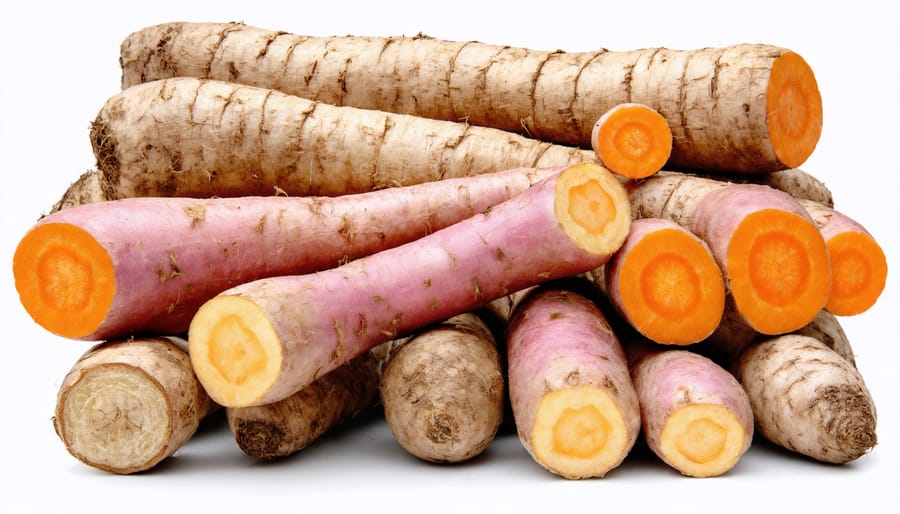
Root Vegetables Quiz
Test your knowledge of common root vegetables with these identification questions. Remember, organic root vegetables often display subtle differences from their conventional counterparts.
1. Which characteristic best indicates an organic carrot?
a) Irregular shape with natural bends
b) Perfect cylindrical form
c) Uniform orange colour
d) Completely smooth surface
2. True or False: Organic potatoes typically have more pronounced eyes and slightly thicker skin than conventional varieties.
3. When examining organic beets, which feature suggests proper organic cultivation?
a) Deeply saturated colour
b) Presence of soil particles in root grooves
c) Uniform, perfectly round shape
d) Both a and b
4. Match the root vegetable to its characteristic earthen scent:
– Carrot: Sweet, earthy
– Potato: Mineral, soil-like
– Beet: Rich, forest-floor aroma
5. What percentage of visible blemishes is acceptable for certified organic root vegetables in Alberta?
a) 0-5%
b) 5-15%
c) 15-25%
d) More than 25%
Remember, while these indicators can help identify organic produce, always verify certification through proper channels. Local farmers’ markets across Alberta often provide excellent opportunities to learn about root vegetable identification directly from growers.
Check your answers at the bottom of this article and share your results with fellow farmers in our community forum.
Leafy Greens Challenge
Let’s test your knowledge of organic leafy greens commonly grown in Alberta’s market gardens and greenhouses. When identifying organic lettuce varieties, look for vibrant, natural colouring without artificial sheen. Organic Romaine typically shows slightly irregular leaf patterns and may have small holes from beneficial insects, which is perfectly normal in organic farming.
For kale identification, focus on the distinctive curly or dinosaur (lacinato) varieties. Organic kale often displays deeper blue-green hues compared to conventional alternatives. Watch for natural blemishes that indicate pesticide-free growing practices. A helpful tip from Edmonton-area organic farmer Sarah Thompson: “True organic kale often has visible mineral deposits on its leaves from natural fertilizers.”
Organic spinach presents unique identification challenges. Look for leaves that are slightly thicker than conventional spinach, with a deep forest green colour. The stems should be sturdy but not artificially rigid. Baby spinach leaves in organic production tend to show more variety in size and shape compared to uniform conventional crops.
Quick Challenge: Can you spot the difference between organic and conventional spinach by examining leaf texture? Organic spinach typically has a slightly coarser feel due to natural growing conditions and soil-based nutrients. Many Alberta farmers use this tactile test as a quick verification method during harvest.
Remember, these subtle differences are your best indicators when selecting truly organic leafy greens at farmers’ markets or farm gates.
Seasonal Alberta Vegetables
Alberta’s diverse growing regions support a remarkable variety of seasonal vegetables throughout the year. In our quiz section focused on local produce, you’ll find questions about root vegetables like carrots, potatoes, and beets that thrive in our prairie soil from late summer through fall. Learn to identify the distinct characteristics of Alberta-grown cabbage varieties, which are particularly sweet due to our cool nights.
Test your knowledge of cold-hardy vegetables like kale and Brussels sprouts, which can withstand early frosts and often taste better after exposure to cold temperatures. Our spring section challenges you to recognize early-season crops such as asparagus, radishes, and green onions that mark the beginning of Alberta’s growing season.
Challenge yourself with questions about greenhouse-grown vegetables that extend our growing season, including tomatoes, cucumbers, and peppers. The quiz includes tips for identifying locally grown produce at farmers’ markets and spotting peak ripeness indicators specific to our climate.
For market gardeners and farm-direct buyers, we’ve included seasonal availability guides and storage recommendations for each vegetable. Special attention is given to heritage varieties that have adapted to our unique growing conditions over generations of farming in Alberta. Understanding these regional characteristics helps support local food systems and ensures you’re selecting the freshest produce available in each season.
Real-World Application Tips
Local Market Shopping Guide
Alberta’s farmers’ markets offer a unique opportunity to test your vegetable identification skills in a real-world setting. When visiting popular markets like the Calgary Farmers’ Market or Edmonton’s Old Strathcona Farmers’ Market, take time to engage with local vendors who can help you verify organic authenticity and learn about unique heritage varieties.
Look for seasonal indicators at market stalls: early spring brings fiddleheads and rhubarb, while late summer showcases heirloom tomatoes and unique squash varieties. Many Alberta vendors offer taste testing, providing an excellent opportunity to distinguish between similar-looking vegetables through flavour profiles.
Consider visiting markets during off-peak hours (typically early morning or late afternoon) when vendors have more time for education and discussion. Bring a notebook to record distinguishing features of unfamiliar vegetables, and don’t hesitate to ask about cooking suggestions – most vendors are passionate about sharing their knowledge.
Remember that Alberta’s growing season influences market offerings, with root vegetables and cold-hardy greens available for extended periods compared to more tender vegetables.
Certification Labels Explained
When it comes to identifying organic certification labels in Canada, there are several key marks to recognize. The Canada Organic logo, featuring a maple leaf rising above fields, is your primary assurance of certified organic produce. This mark indicates compliance with the Canadian Organic Standards and appears on products with 95% or more organic content.
The Quebec Organic (Bio Québec) symbol, displaying “BIO” with a distinctive maple leaf, is specifically for products certified within Quebec. For imported produce, look for the USDA Organic seal or the EU Organic logo, both recognized under equivalency arrangements with Canadian standards.
Local certification bodies like Pro-Cert Organic and EcoCert also issue trustworthy marks. These organizations conduct regular farm inspections and ensure compliance with organic production methods. Remember that multi-ingredient products must list their organic ingredients separately in the ingredient declaration, helping you make informed choices at the market or grocery store.
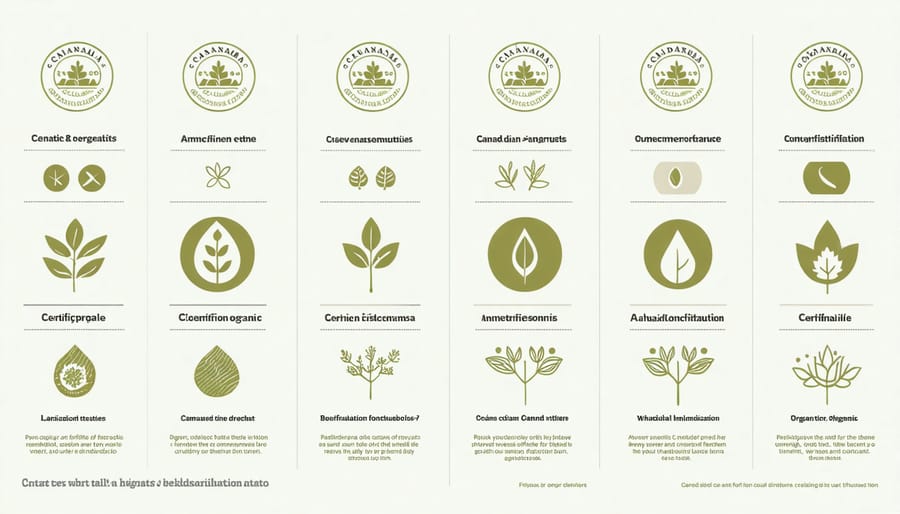
As we wrap up this vegetable identification journey, remember that becoming proficient at identifying different vegetables is an ongoing process that strengthens with practice. The skills you’ve developed through this quiz not only enhance your farming expertise but also contribute to the broader Canadian agricultural community. Whether you’re managing a market garden in southern Alberta or running a large-scale operation in the prairies, accurate vegetable identification is crucial for crop planning, harvest timing, and meeting consumer demands.
We encourage you to continue expanding your knowledge by connecting with local agricultural extension services, joining farmer networks, and participating in seasonal workshops. Consider maintaining a photo journal of your produce throughout different growth stages, which can serve as a valuable reference tool. Remember that sharing your knowledge with others strengthens our farming community and supports sustainable agriculture practices across Canada.
Keep testing yourself regularly, especially when new varieties are introduced to your region, and stay connected with fellow farmers who can offer valuable insights from their own experiences. Your commitment to learning makes our agricultural sector more resilient and successful.


